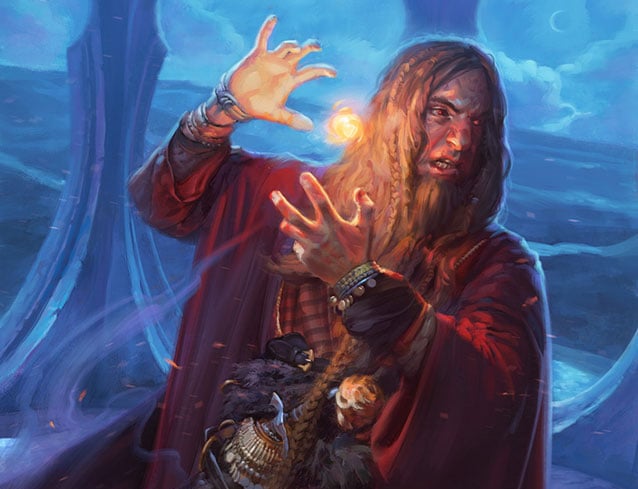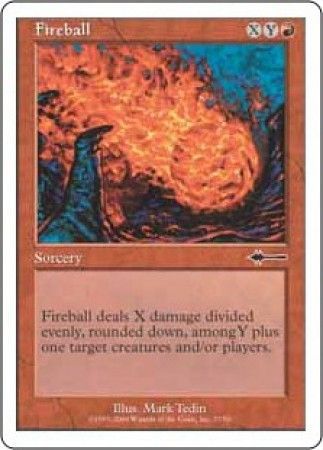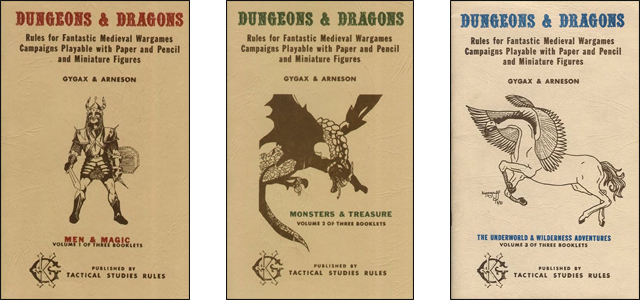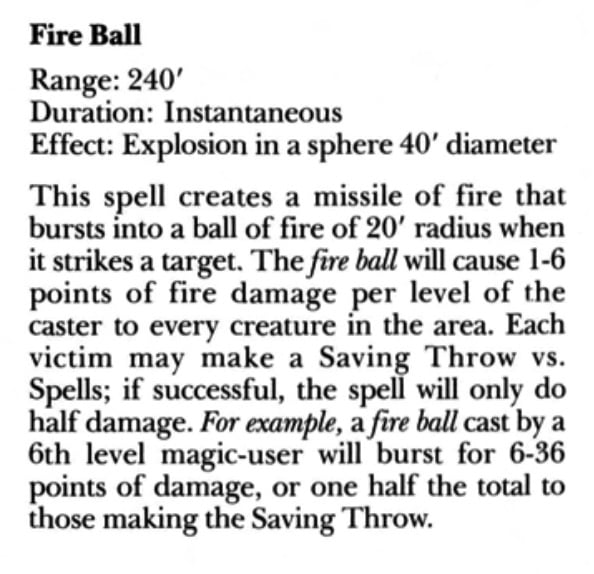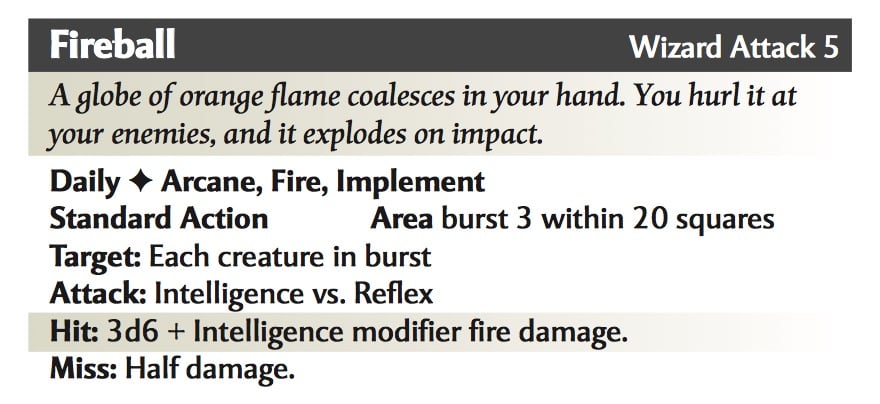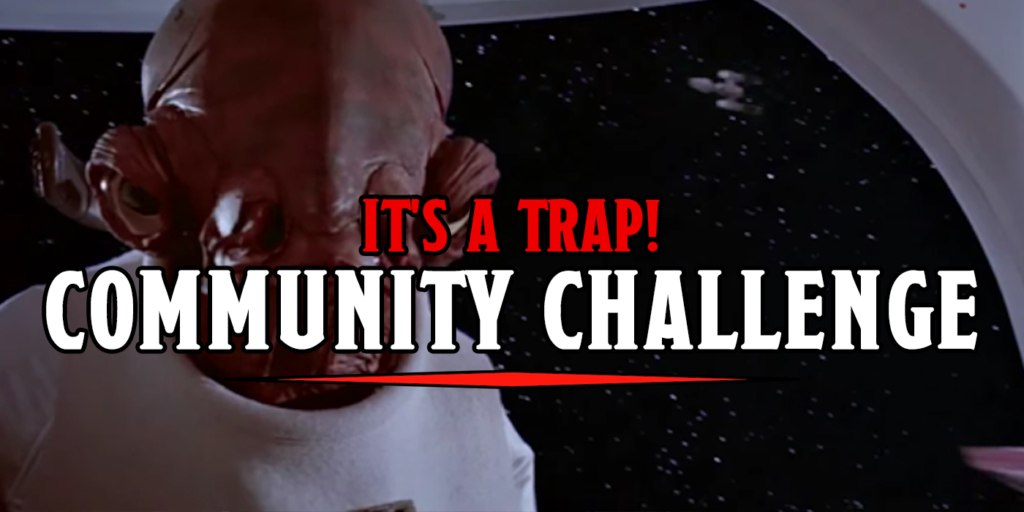D&D: Fireball Is The Best Spell Whatever Your Edition
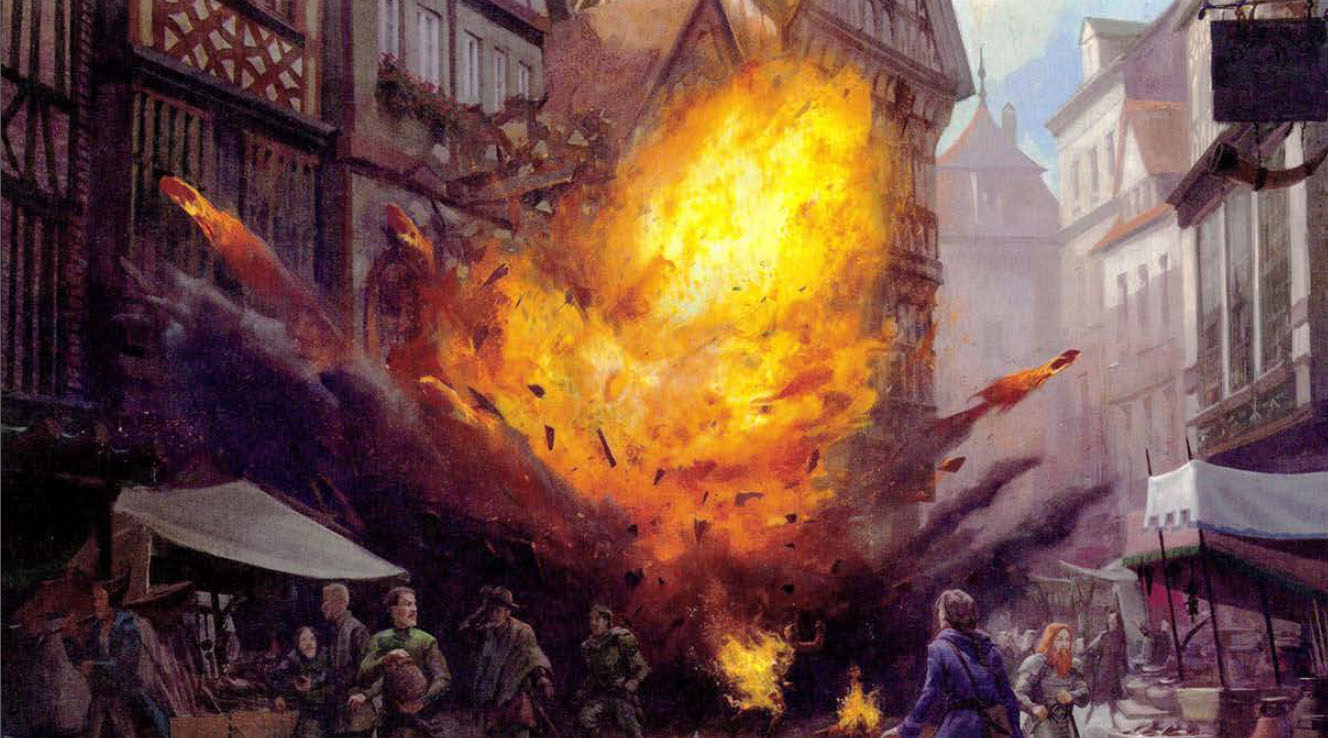

Look there’s a reason that everyone always casts Fireball and it’s not just that it’s overpowered in 5th. It’s overpowered in every edition.
If you’re a magic-user and you’re playing D&D, then odds are good you’ve either cast fireball, or wanted to cast that spell very badly. This is a spell that was so prevalent in the editions, that people had to take to forums and talk about how you don’t have to always pick fireball all the time. One of the most famous guides to playing a Wizard (in 3rd edition no less) freely admits that for all that blaster wizards are a terrible idea, even if all you’re doing is supporting the party, sometimes fireball is the answer.
And casting it is almost a rite of passage for players–the reward for playing as a Magic-User of some type and surviving long enough to get access to 3rd level spells is getting to cast fireball. And while there are plenty of other spells that are equally as iconi, like Magic Missile, Fireball you have to work to get.
The first time you get to cast it makes you feel like you’ve hit a turning point as a Magic User, you’ve gone from being the frail, be-robed figure with a d4 (or d6) hit dice that can maybe deal a d4+1 and then has to go lie down for a while, to a powerful wizard capable of tossing out some significant damage. It’s far from a perfect spell–depending on the edition you’re playing, there are plenty more that will give you much more bang for your buck–but it’s a solid hit against a single foe, and it’s great for clearing out a room of a dungeon (though you’ll want to be careful with it in earlier editions).
So with all that in mind, let’s take a look at Fireball through the ages!
First Edition
Wait now hang on just a second. When I said throughout the ages, I meant throughout the ages–so grab your gloves folks, we’re opening up the White Box and diving all the way back to the deep magic from before the dawn of time.
Original D&D
That’s more like it. Everything is in yellows, browns, and muted rusty colors. There’s that vague, clinging shag carpet smell to just about everything–and then of course there’s the White Box of D&D. This is where a lot of the foundational stuff is laid out. Magic-Users gain access to new spell levels every two levels. 3rd level spells at 5th level Magic-User (the class was called Thaumaturgist–and, side note, they had the fighting capability of 3 Men). When you had access to Fireball it had:
Basically everything you’ve come to expect from Fireball. Very long range, hits with the strength of your caster level (and you could gain infinite caster levels, theoretically) ad explodes in a 2″ radius.
Fireball is largely unchanged after that. You have the Expert, Companion, Master, and Immortal series which keep Fireball fairly constrained. They change 24″ to 240′ and give it a 20′ radius explosion (sound familiar?)
Other than that, Fireball is Fireball throughout the Revisions. But then we come to AD&D…
1st Edition
Alright here we go. 1st Edition D&D–again Fireball is only available to Thaumaturgists (the progression goes Prestidigitator/Evoker/Conjurer/Theurgist/Thaumaturgist/Magician/Enchanter/Warlock/Sorcerer/Necromancer/Wizard/Wizard (12th-20th level).
Fireball is, of course, still present. Still 3rd level, and it still does a base d6 damage per level. But! There are a few key differences–a little bit of wrinkles that change the way the spell interacts with the game world. Let’s take a look:
The biggest differences are the specific material components, the 3 segment casting time, the shorter range (dependent on level) and of course the area of the Fireball. Now granted this all calculates to roughly a 20′ radius sphere, which they could have just said, but instead they went through all of the math to clarify that this fills “roughly” a 33,000 cubic foot volume (and then ruin it with their parenthetical by saying -or yards- I know which interpretation I’d take every time).
But the other interesting thing about this is that 1st Edition fireballs spread to fill their area, which meant you could fill up a narrow corridor with a single fireball–although that also has a subtler implication. If you cast your fireball at the ground you’ll gain some extra volume as well, because your sphere becomes a hemisphere. If you want to math it out, you’ll find that it gets you an extra 5 feet of radius, so if you cast at the ground you get a 25 foot radius explosion, and if you target a creature specifically you’ll get less (but still get some extra range).
The other big thing is that Fireball creates a massive change in your environment. In this edition, Fireball sets everything on fire. Papers, wooden things, everything combustible catches flame, and in a particularly Gygaxian (read–suck it players) move, a fireball will melt gold or other treasure that might be exposed to the flame. This is also where the Material Components come in as well–bat guano and sulfur (good old gunpowder).
2nd Edition
2nd Edition didn’t really change too much. The biggest difference is that now instead of a 10″ range +1″ per level, the range is calculated as 10 yards + 10 yards/level (which is good) because now you can cast a fireball further away from you–rather than relying on the fluctuating indoor/outdoor range scale. 2nd Edition also adds a cap to the damage (10d6) which says to me that someone got tired of 18th and 19th level characters just straight up blasting everyone all the time with 19d6 fireballs that they can cast 6 times per day.
3rd Edition
Third Edition changed a lot for Fireball. The two biggest changes are: it has a 400ft. + 40 ft./level range (making it one of the longest ranged spells by far). And the second thing that this edition adds is all of the Metamagic feats. Especially for Wizards, you could keep getting things out of Fireball well past your 10d6 Damage cap. You’d see Empowered and Maximized Fireballs, get some Quickened Fireballs fired off in an instant accompanying a regularly cast one that deals 20d6 in a single round, or a Quickened and Empowered Fireball along with another Empowered Fireball dealing 20d6 x1.5 in a single turn–and again there are plenty of better ways to deal damage to a single target, but this remains a classic.
4th Edition
For all that I love 4th Edition, it straight up has the worst fireball in the history of gaming. Let’s take a look:
Now granted, this is a sizable burst and it does half damage on a save–but 3d6, especially at 5th level, is basically less than a slap on the wrists for your foes and unless you’re going up against minions it’s not going to feel good. Especially on a Daily power. But 4th Edition did provide some good framework for the next iteration of Fireball which is probably my favorite one.
5th Edition
5th Edition goes back to basics, but with a twist. And all they did was up the base damage to 8d6. But it feels real good–it feels like a ton of fun to cast, and even if you roll terribly you’re still doing things. I don’t know why those 2 extra d6 make such a difference, but they do. And you can keep the damage levelling up along with you–it’s real efficient and actually serves as a great baseline for offensive spells. Spells are or aren’t as good as Fireball in this edition.
Well, that’s Fireball, from OD&D through to 5th. Some things are classic for a reason–anyway, just keep that in mind over the weekend as you’re fireballing a 20×30 room full of Orcs–not only are you dealing damage efficiently, you’re also part of a grand D&D tradition.


